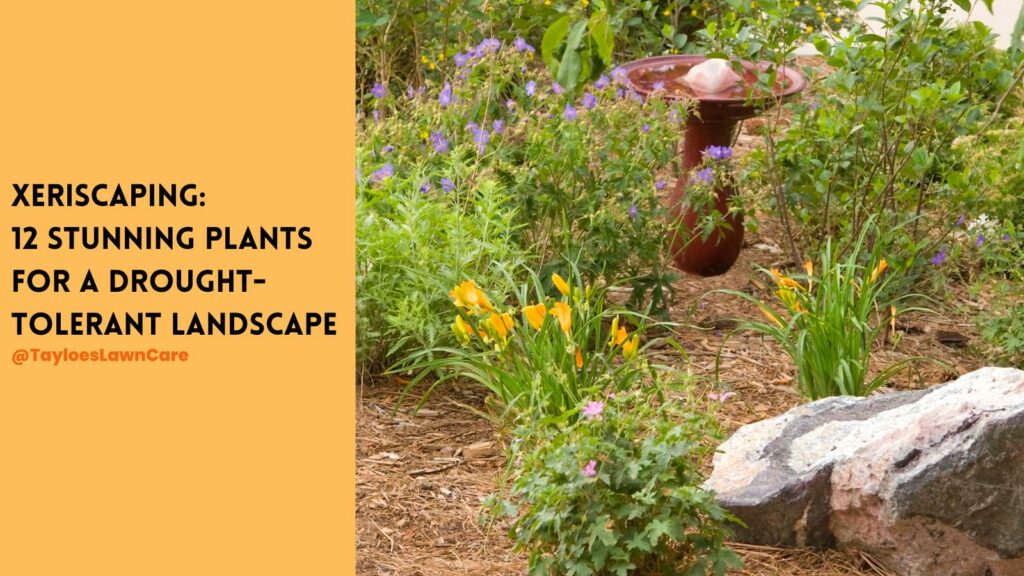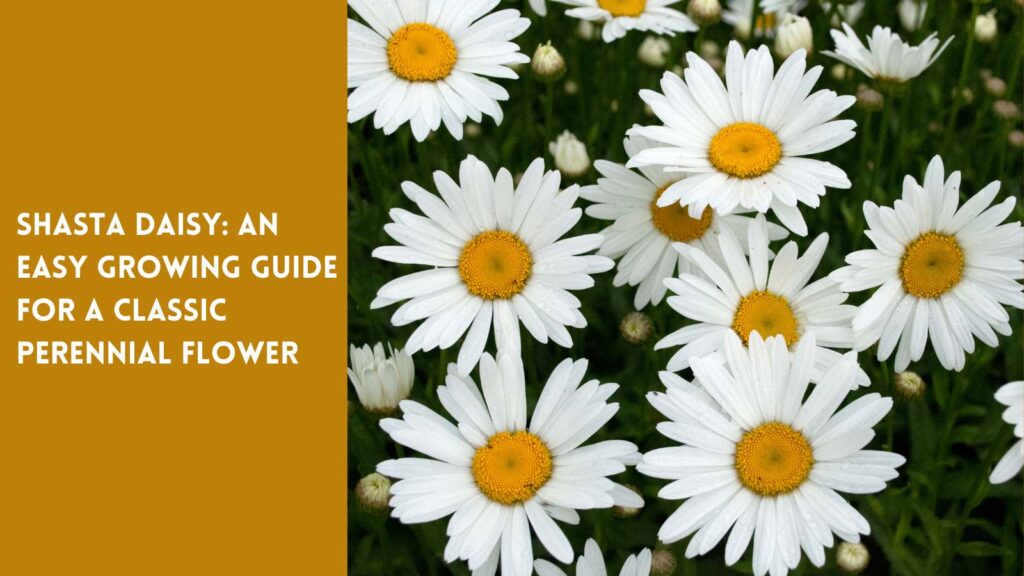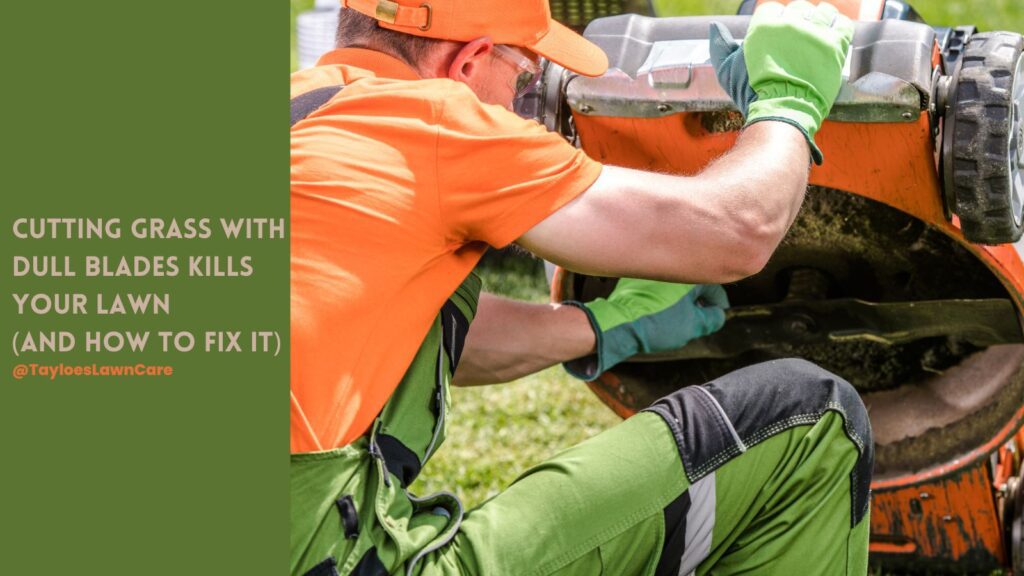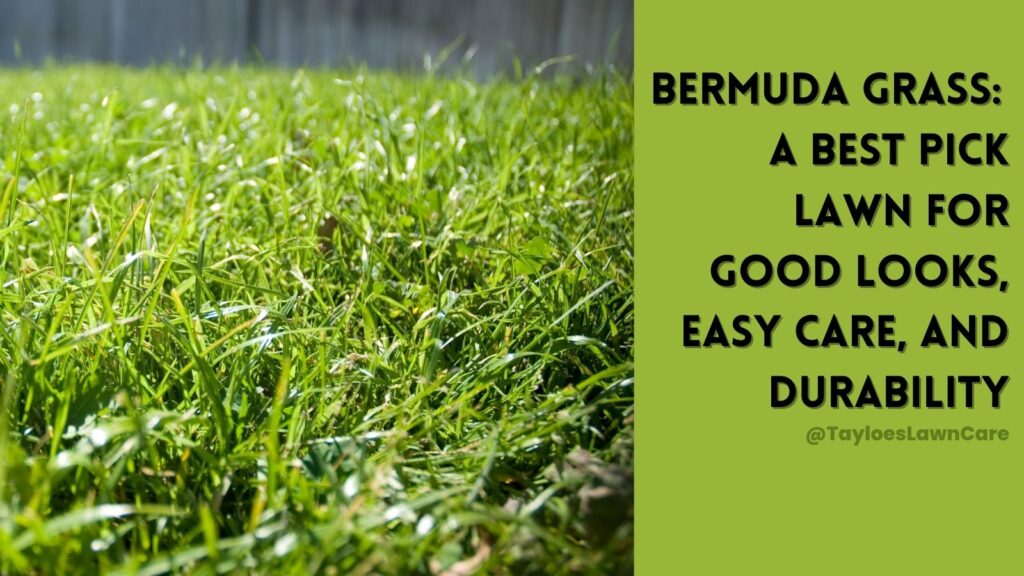Last Updated on: 30th October 2023, 02:18 pm
Get all the facts before you rip out your lawn in favor of wildflowers.
At Tayloe’s Lawn Care Services, we occasionally receive inquiries about replacing traditional front lawns with captivating wildflowers and native species grasses.
We’re happy to assist with such installations, understanding the allure they hold for many homeowners. The benefits of these installations are unmistakable, but the cons are seldom pointed out by social media influencers encouraging you to rip out your grassy lawn.
However, it’s our responsibility to ensure our clients are well-informed. While the idea of a wildflower meadow can be enchanting, it’s essential to consider its cons.
Interestingly, we’ve also heard from homeowners who, after trying the wildflower approach, have opted to revert to grass due to unforeseen challenges. We believe there’s no “right” or “wrong” choice here; it’s all about what aligns best with your preferences, lifestyle, and the specific conditions of your property.
Before making any decision, knowing the potential challenges that might arise from such a transformation is crucial.
The Challenges of Replacing Your Lawn with Wildflowers and Native Species

While replacing traditional lawns with wildflowers and native species is gaining traction, weighing the pros and cons before deciding is essential. While the idea may sound enchanting, several practical considerations exist. Here are some reasons why replacing your lawn might not be the best choice for everyone:
1 – Maintenance challenges of native species lawns:
Contrary to popular belief, wildflower and native species gardens aren’t maintenance-free. They require regular weeding, especially in the initial stages, to prevent invasive species from taking over. Over time, some species might dominate, requiring intervention to maintain diversity.
2 – Aesthetic consistency:
A wildflower meadow can look stunning during its peak bloom but appear unkempt during off-peak seasons. This might not be your best choice if you prefer a neat appearance year-round.
3 – Allergies and native species:
Wildflowers can be a significant source of pollen, which can cause a flare-up of allergies for some individuals. A wildflower lawn might not be ideal if someone in your household is sensitive to pollen.
4 – Pests and critters:
Native species – grasses and flowers – can attract native wildlife. While it might be delightful to see butterflies and dragonflies, you might also attract less welcome guests, like rodents or insects that can become pests.
5 – Bee sting allergies:
Native species, particularly wildflowers, attract various pollinators, including bees. Bees are vital for life.
But this can pose a significant risk for individuals with bee sting allergies. Increased bee activity in your yard could lead to a higher chance of accidental stings, which can be life-threatening for those with severe allergic reactions. If you or a family member has a bee sting allergy, it’s essential to consider this risk before transitioning to a wildflower lawn.
6 – Local regulations:
Some municipalities have strict guidelines about lawn and garden appearances. Before making any drastic changes, you must check local regulations to ensure you comply.
7 – Native species may impact your home’s resale value:
If you’re considering selling your home, a non-traditional lawn might deter potential buyers who prefer the classic lawn look or are wary of the maintenance involved.

8 – The water saving is not immediate:
Many native plants are indeed drought-tolerant. However, establishing them can require a significant amount of water initially. It’s a misconception that they always use less water than traditional lawns.
9 – Foot traffic:
Native species lawns aren’t as resilient to foot traffic as traditional lawns. If you have children or pets that love to play outside, a wildflower garden might also not hold up.
10 – Cost of swapping your grass for native species:
Establishing a wildflower or native species garden can be more expensive than maintaining a traditional lawn, especially if you start from scratch.
11 – Limited recreational use:
Traditional lawns offer an even surface suitable for various recreational activities, from playing catch to hosting picnics. A native species installation, with its uneven terrain and dense vegetation, might not be as versatile for such activities.
12 – Wildfire risk increases:
After their blooming season, many native grasses and wildflowers can dry out, leaving behind a layer of dead vegetation. This dried material can be highly combustible, especially in drought-prone areas. A dense layer of native species without proper management can inadvertently increase the fire hazard for your property and surrounding areas.
Given the increasing frequency and intensity of wildfires in certain parts of the world, this is a relevant and important consideration for homeowners.
13 – Soil erosion as you transition to native species:
Transitioning to native grasses and wildflowers might expose the soil for an extended period, especially during the establishment phase. This lack of immediate ground cover can lead to soil erosion while the plants take hold. That’s particularly important after heavy rains. Erosion can strip the topsoil of its nutrients, making it even more challenging for new plants to take root and thrive.

The Takeaway: Replacing a Lawn With Native Species Is Lovely But Comes With Its Challenges
While these cons provide a comprehensive view of the challenges associated with native grasses and wildflowers, it’s essential to remember that every landscape choice has pros and cons. The key is to find what aligns best with your preferences, lifestyle, and wishes.
While the idea of a wildflower meadow can be alluring, it’s essential to consider the practical implications. Every homeowner’s needs and preferences are unique, so what works for one might not work for another. Before deciding, weighing the pros and cons and considering the long-term commitment involved is crucial.
Whatever you decide, we are here to help. Connect with Tayloe’s Lawn Care Services – online on Facebook – or text us at 252.287.3375.
Author Profile

- Deborah Tayloe is the CEO and co-founder of Tayloe's Lawn Care Services, LLC. She has a B.S.Ed and holds certificates in soil and water management and herbology from accredited programs.
Latest entries
 GardeningSeptember 27, 2025What perennials, shrubs, and trees don’t like fall pruning (and why)?
GardeningSeptember 27, 2025What perennials, shrubs, and trees don’t like fall pruning (and why)? Trees and ShrubsSeptember 14, 2025Fall Shrub Pruning Guide (September–October)
Trees and ShrubsSeptember 14, 2025Fall Shrub Pruning Guide (September–October) Trees and ShrubsApril 22, 2025Boxwood Blight: Early identification and isolation
Trees and ShrubsApril 22, 2025Boxwood Blight: Early identification and isolation Flower GardenApril 8, 2025John F. Kennedy Rose: Hybrid tea rose with elegant white blooms
Flower GardenApril 8, 2025John F. Kennedy Rose: Hybrid tea rose with elegant white blooms






